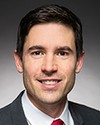Thank you very much.
First of all, I'd like to congratulate Ms. Goodridge on the birth of her little new addition to her family. I had the opportunity to meet with her in Fort McMurray at the Arctic Winter Games.
Thank you for the opportunity to speak. I'm located on the traditional territories of the Tlicho first nation and Fort Simpson Métis.
It is unfortunate that despite our request, we were unable to have an indigenous government leader from the Northwest Territories here with us to provide their input. I would highly recommend that you reach out to council leaders in the NWT to gain their perspective first-hand.
This issue is about people and the environment, not politics. All water in the Mackenzie River basin flows into the NWT and ends up in the Arctic Ocean. I live in Fort Simpson, a community located where the Mackenzie River and Liard River meet. Our legislative assembly is in Yellowknife, which is on the shores of the Great Slave Lake.
For all northerners, in particular indigenous people, water is life. Northwest Territories residents from Fort Smith on the Alberta border to Inuvik and beyond the Arctic Ocean rely on water from the Mackenzie basin that comes from upstream. The Slave River, Great Slave Lake and the Mackenzie River are used by northerners for hunting, trapping and fishing. Thirteen of the 16 NWT communities downstream of Alberta use river or lake water for their drinking water. The water is at risk of impacts from development that occurs outside the NWT.
We have a comprehensive water management agreement with Alberta that was signed in 2015. The agreement is not just about water quality and quantity, like others; it is about co-operation, mainstream ecosystem health, protecting traditional use and effective management of transboundary waters. We need the Alberta government to honour the terms of this agreement. We were not notified of the Kearl Lake mine incident or the Suncor spill that took place last week.
I recently met with the Alberta Minister of Environment and Protected Areas. Minister Savage has assured me that Alberta will notify the NWT of any spills as soon as they are aware and will work on improving communications. They are supportive of an NWT indigenous member sitting on a transboundary bilateral agreement or management committee on the federal, provincial, territorial and indigenous working group in addition to the Government of Northwest Territories representative.
People are increasingly concerned and scared about the effects of oil sands development on the water, land and air in the Northwest Territories.
I was just in Fort Smith at a community meeting and recently in a governmental council meeting with indigenous government leaders. From the NWT indigenous leaders to the individual residents, trust in government's ability to keep their waters safe has been lost. This trust needs to be rebuilt. The Government of the Northwest Territories and the NWT indigenous representatives must be involved in the working group and committee struck towards rebuilding trust.
In closing, I will not support the plan to release treated tailings water from the oil sands into the Athabasca River unless the NWT is convinced that it is done safely.
I would now like to turn things over to Deputy Minister Dr. Erin Kelly to give a short presentation.
Thank you, Mr. Chair.



